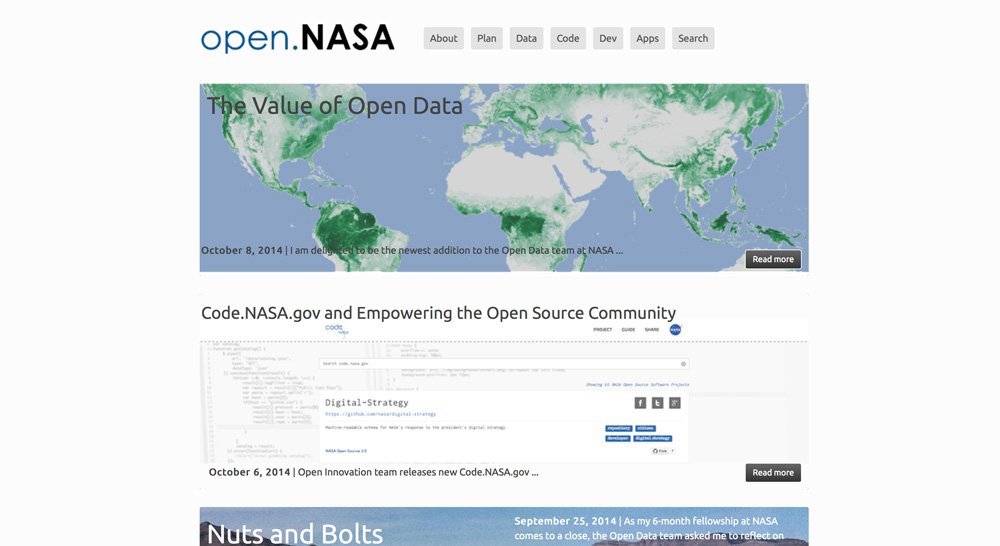In the “Web 1.0” era of the mid-1990s to early 2000s, Microsoft Frontpage lowered the barriers to web publishing. It was easy to use (especially with MS Office familiarity), it was collaborative—enabling multiple authors to contribute to a single website—and it enabled otherwise non-tech-savvy users to add a variety of dynamic elements, such as forms, polls, discussion boards, and guestbooks.
Of course, given Frontpage’s popularity—and its ubiquitous though uninspiring themes—spotting a website made in Frontpage was laughably easy. On a less happy note, however, there were problems with the code underlying its pages, which often didn’t behave properly across browsers. There were also issues with the web server code that made the aforementioned dynamic elements so easy to implement.
Can the same be said of WordPress?
The Way We Were
In the old days of the World Wide Web, creating and publishing web pages required strong technical skills. You had to format your content using HTML code, often using little more than a text editor. Type one bracket or symbol wrong, and your page could disintegrate.
You then had to muddle with file-transfer protocols, using a cryptic process to upload your pages to a server so the rest of the world could view them. Often, that required configuring file-transfer software to specific settings for certain file types (text, images, scripts), lest your files be corrupt and display as pure gibberish.
In summary, creating web pages was no small task. Creating complete websites, consequently, could be a major project.
What You See Is What You Get
Soon, however, software makers stepped in, offering all-in-one web creation, publishing, and management programs. Among the available apps was Frontpage. Originally developed by Vermeer Technologies, the program—along with the tiny company making it—were acquired by Microsoft, another little company you may have heard of.
Although rival programs quickly flooded the burgeoning web design market, Frontpage was popular because its interface was much like that of Microsoft’s Office suite. Creating and editing web pages was very similar to the process for formatting Word documents, and uploading pages to a web server was very much “set it and forget it.” Once you keyed in your server address, username, password, and other particulars, the software allowed easy addition and updating of pages among different users.

Another reason Frontpage was so widely used was the increasing need for pages to be dynamic. Previously, such features as discussion boards, site search, form-mail, data collection, guestbooks, and user polls required not only HTML knowledge, but also programming skill. Frontpage’s solution lay in its Frontpage server extensions, which were automatically-generated server-side scripts that allowed site creators to make pages that responded to user input.
There was even a stripped-down, free version of Frontpage that came with Internet Explorer 4, 5, and Windows 98: Frontpage Express. It not only offered a completely visual, intuitive interface, but it also employed the aforementioned Frontpage extensions.
The Good, The Bad, and The Ugly
However, Frontpage extensions often failed and had to be reset. They also posed a security risk while requiring significantly more server space than did custom-programmed code, an issue back when memory and storage were not nearly as plentiful.
Furthermore, Frontpage frequently produced bloated, non-standard HTML code that, particularly when the user employed one of the full program’s pre-designed themes, broke down in various browsers.
Speaking of Frontpage themes, they were both ugly and overused. It became comically easy to spot websites made in Frontpage, which were especially numerous but not especially pretty.
It Just Wasn’t Enough
Despite the widespread use of web authoring software like Frontpage, many people still felt that web publishing’s barriers to entry were too high, particularly when it came to creating dynamic sites. Writers, artists, and business types alike wanted both to share ideas and stimulate discussion without having to buy or learn expensive software. Others, happy to visit pages without creating them, nonetheless wanted to contribute their own thoughts.
Let’s Try This Again
Enter Web 2.0. That term, coined by O’Reilly Publishing’s Darcy DiNucci at a 2004 Web conference, captured the growing desire for a more open, interactive web, particularly one brimming with user-generated content.
By then, blogging, a web-based way for non-tech-savvy content creators to post their renderings, was becoming increasingly popular. Early blogging platforms included Typepad, Moveable Type, Blogger, and WordPress, which was a fork of a minor blogging platform known as b2cafelog. Adapted from the latter by Matt Mullenwug, it soon became popular because it was free (among other reasons) at a time when its aforementioned contemporaries were looking for ways to collect fees from users.
The Blogging Age
For a long time, blogs differed from websites in that the former were article and discussion-based. Authors logged in to a web-based portal to write, edit, and publish content, which could then be configured to accept and generate visitor commentary. Part of the appeal was that pretty much anyone could start a blog, and that is pretty much what everyone did.
Disgruntled teens, bored workers, frustrated artists, and wannabe writers all began spewing their thoughts indiscriminately. The quality of their offerings varied widely, and blogging soon took on a negative quality. The fact that the code underlying blog pages was often bloated and non-standard didn’t help.
That’s not to say that good blogs didn’t exist. Mixed in with the pervasive mound of mediocre mental meanderings, the good ones allowed platforms like WordPress to be taken seriously by news outlets, journalists, and other professional content generators.
Of course, the folks developing WordPress responded to user demands for ease of use and customization. To that end, many themes began cropping up in the WordPress theme repository, though most bloggers used the plain and reliable default theme known as Kubrick. Later, when the Twenty Ten Theme became available, its clean lines and navigable interface made it enormously popular.
Beyond the Blog
Despite its limitations, web designers soon commandeered the WordPress platform to create full-blown websites. It was free to use on almost any web host, it was easy (you could apply a ready-made theme to all your pages with just a few clicks), and it offered dynamic elements without the need for programming knowledge. Anyone could set up a functional website in minutes.
In other words, it was a lot like Frontpage.
The main differences included that it was web-based (you didn’t need to buy, install, or grapple with desktop software), it was free, and it was open source: it allowed a community of developers to tinker with the underlying code. The latter resulted in a myriad of ready-made solutions, not only themes but also plugins (site add-ons that gave WordPress pages even more power and functionality).
Blah, Blah, Blog
Among the biggest drawbacks for early adopters was that many a WordPress site looked “bloggy”, no matter how hard one worked to make it look otherwise. Worse yet, some widely-available themes didn’t play nicely with various browsers, not unlike those of Frontpage, causing many WordPress enthusiasts to lean heavily on the default themes installed with the platform. On top of all that, customizing WP themes required even more technical knowledge than did customizing traditional Web pages; as a result, many WordPress sites were not especially original—or pretty.
Yes, Frontpage and WordPress have had some dubious similarities.
In addition to overuse of uninspiring, “bloggy-looking” themes, there were (and still are) security vulnerabilities. Some of that’s been baked into the source code itself, but a lot of it comes from WP’s vast universe of plugins, a collection of add-on apps that has grown so fast that it’s nigh impossible to ensure the integrity of its many bit parts.
Sure, you can install a plugin for your site that’ll do almost anything, but doing so may pose a security risk, allowing hackers to infiltrate your files. A rogue plugin, meanwhile, can take down an entire site, causing issues that often require technical expertise to fix.
In other words, WordPress poses problems quite similar to those faced by Frontpage users employing the now-deprecated Frontpage Server Extensions.
But It’s Different This Time!
Unlike Frontpage, WordPress is open source. Its codebase is open to developers, with its core functionality updated frequently. Problems, including security issues, are addressed almost as quickly as they come up.
You’ve Come a Long Way
WordPress has evolved rapidly in the past several years. The available default themes have improved dramatically, lending themselves to better and better customization. In the meantime, a bevy of sleek free and premium themes has flooded the market, each offering robust feature sets and customization options. As a result, it’s much harder to determine who’s using WordPress these days,
And WordPress is almost everywhere on the web. High-profile sites using the platform include:
The Who

Fortune

Vogue

open.NASA

While it can still be easy to spot a WordPress site, that’s only a testament to its enduring popularity. With so many people using it, representing all possible skill levels, you’re bound to encounter novice WP blogs aplenty.
Where to From Here?
With WordPress growing so rapidly, it’s fast becoming the defacto method for website creation, bumping the venerable Dreamweaver (Adobe’s industry-standard desktop Web software) from its vaunted position as the method of choice among web professionals. Web design and maintenance have moved from the desktop to the cloud, opening numerous possibilities. But WordPress’ popularity has also made it a target among critics, rivals, and hackers.
Expect to see more cloud-based web creation tools in the coming years. Private companies behind such platforms as Wix, Weebly, and Squarespace have the WordPress platform, which many people still find clunky to use, firmly in their sights. Meanwhile, rival open-source platforms, including the widely-used Joomla and Drupal, have been evolving rapidly in response.
Is Wordpress the New Frontpage?
No comments:
Post a Comment
Note: Only a member of this blog may post a comment.